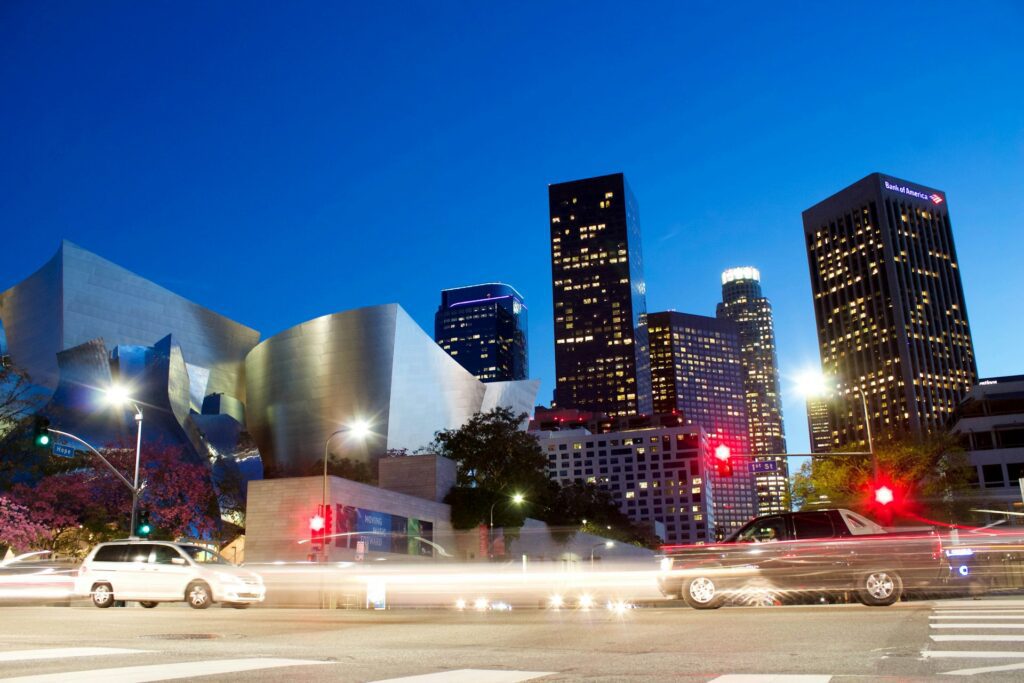
Navigating Historical Property Constraints in LA’s Luxury Neighborhoods
Los Angeles, with its sprawling cityscape and iconic neighborhoods, offers a unique blend of modern living and historical charm. However, owning or renovating a historical property in LA’s luxury neighborhoods comes with its own set of challenges. Understanding and navigating the constraints imposed by LA building codes and historical property regulations is crucial for property owners and prospective buyers alike.
Preservation of rich cultural and architectural past
Los Angeles values its historical architecture as a testament to the city’s rich cultural and architectural past. Preservation is not merely about maintaining the aesthetic appeal of old buildings; it’s about safeguarding the narratives and events that these structures have witnessed. These buildings stand as silent witnesses to the city’s evolution, offering a tangible connection to its diverse history.
This is why properties classified as historic landmarks are subject to specific restrictions and guidelines. These constraints aim to preserve the architectural integrity and historical significance of buildings. The guidelines ensure that the essence of the original design is maintained, allowing future generations to appreciate the architectural mastery and cultural context of the era they represent.

Los Angeles Department of Building and Safety
The Los Angeles Department of Building and Safety (LADBS) plays a pivotal role in enforcing these building codes and ensuring compliance with preservation standards. The department is instrumental in the delicate balancing act between modern urban development and historical preservation. This department is responsible for the oversight of construction and renovation projects, ensuring they adhere to local regulations.
Before purchasing or renovating a property in LA, it’s essential to determine if it is classified as a historical landmark. Identifying a historical property involves more than just recognizing its architectural style or age. Potential buyers must delve into property records, historical registries, and local archives to uncover its historical significance.
The city maintains a list of designated historic properties, which can be accessed through the Los Angeles Office of Historic Resources. Accessing this list is the first step in understanding the responsibilities and privileges of owning a historical property. It provides clarity on the specific constraints and potential opportunities available to property owners.
Properties on this list are subject to stricter regulations. Therefore, understanding these constraints upfront can help in making informed decisions and avoiding potential legal and financial pitfalls. Being informed enables property owners to plan effectively, ensuring that their restoration or renovation efforts align with legal requirements and preserve the property’s historical essence.
Local historical societies
Beyond official city departments, local historical societies play an essential role in the preservation of historical properties. These societies are often comprised of passionate volunteers and experts who dedicate their time to advocating for historical preservation. They serve as valuable resources for property owners, offering insights into historical significance and preservation techniques.
Collaborating with these societies can provide access to a wealth of knowledge and historical context that might not be available through official channels. Moreover, their support can be invaluable in navigating the often complex approval processes associated with renovations and restorations.
The LADBS is tasked with enforcing LA building codes, which include regulations specific to historical properties. Their role is critical in ensuring that historical properties are maintained in a way that respects their past while accommodating necessary modernizations. The department oversees the application of codes that cover various aspects, from structural changes to aesthetic alterations.

Historical property guidelines
For historical properties, the guidelines are more stringent. Any modifications, whether interior or exterior, typically require approval from the LADBS. This process ensures that any changes are in line with the historical and architectural significance of the property. The department acts as a gatekeeper, balancing the needs of modern living with the imperatives of preservation.
- Exterior Modifications: Changes to the exterior of historical properties, such as altering facades or adding new structures, are often restricted. The external appearance of a historical property is crucial to its identity. Any proposed modifications must maintain the original architectural style and materials. This ensures that the property continues to contribute to the historical fabric of the neighborhood.
- Interior Renovations: While interior changes may offer more flexibility, significant alterations that affect the structural integrity or historical elements of the property may require approval. The interior of a historical property often contains unique features such as original woodwork, vintage fixtures, and bespoke craftsmanship, which must be preserved.
- Additions and Extensions: Adding new structures or extensions to historical properties is a delicate process. The new construction must complement the existing architecture and not detract from the property’s historical value. This requires careful planning and design to ensure seamless integration with the historical elements.
- Demolition: Demolishing historical properties is generally discouraged and often requires a thorough review process. In many cases, alternative solutions, such as restoration or partial renovation, are preferred. Demolition is seen as a last resort, only considered when the property is beyond repair or poses a safety hazard.
The enforcement of these regulations requires a robust compliance framework to ensure that property owners adhere to preservation standards. Regular inspections and audits by the LADBS and other relevant bodies are crucial in maintaining the integrity of historical properties. Non-compliance can result in significant fines and legal repercussions, underscoring the importance of adhering to established guidelines.
Property owners are encouraged to engage with compliance officers early in their renovation process to ensure that all planned changes are aligned with regulatory requirements. This proactive approach helps in avoiding costly delays and potential legal challenges that may arise from non-compliance.
Successfully navigating the approval process for historical property renovations involves several critical steps:
- Research and Documentation: Gather all necessary documents related to the property’s historical status. This includes architectural plans, historical records, and any previous renovation approvals. Proper documentation serves as the foundation for any renovation project, providing a clear understanding of the property’s historical context and legal constraints.
- Consultation with Experts: Engage with architects and contractors who specialize in historical properties. Their expertise will be invaluable in ensuring compliance with LA building codes and historical property constraints. These professionals bring a wealth of experience and a deep understanding of the intricacies involved in preserving historical integrity while accommodating modern needs.
- Submit Proposals: Prepare detailed proposals for any planned renovations or modifications. These should include architectural drawings, material specifications, and an explanation of how the changes will preserve the property’s historical significance. A well-prepared proposal demonstrates a commitment to preservation and a clear vision for the property’s future.
- Work with LADBS: Submit your proposals to the LADBS for approval. Be prepared for a review process that may require revisions and additional documentation. Patience and flexibility are essential, as the approval process can be time-consuming and may involve multiple rounds of review.
Navigating the approval process can be time-consuming and may present several challenges. It’s essential to be patient and flexible, as the LADBS may request changes to your plans to ensure compliance with historical preservation standards. Understanding that the approval process is designed to protect the historical integrity of properties can help in managing expectations.
Additionally, consider the financial implications. Renovating historical properties can be more expensive due to the need for specialized materials and labor. Budget accordingly and factor in potential delays in the approval process. Financial planning should account for unexpected costs and the possible need for additional resources to meet preservation standards.
Gaining the support of the local community can be beneficial in the renovation process. Engaging with neighbors and local historical societies can foster goodwill and support for the project. Community support can be particularly valuable if the renovation project requires public hearings or community consultations.
Hosting informational sessions or open houses can help educate the community about the historical significance of the property and the planned renovations. This can build a sense of shared ownership and pride in preserving the neighborhood’s historical character.
Owning a historical property in LA’s luxury neighborhoods offers the chance to live in a home with unique architectural features that are often absent in modern constructions. These properties often boast intricate details, such as ornate woodwork, vintage fixtures, and bespoke craftsmanship. Each feature tells a story, adding depth and character to the living space.
Living in a historical home offers an aesthetic experience that is rich in texture and history. The unique architectural elements often serve as conversation starters, providing a daily reminder of the artistry and skill of past craftsmen. These features also provide an opportunity for creative interior design, allowing homeowners to blend historical charm with contemporary style.
Living in a historical property connects you to LA’s rich cultural and historical narrative. Many of these homes have storied pasts, having been occupied by notable figures or serving as the backdrop for significant events. Owning such a property places you in the midst of history, offering a unique connection to the city’s cultural evolution.

Contributing to the identity and character of neighborhoods
The cultural significance of historical properties often extends beyond the individual home to the community at large. These properties contribute to the identity and character of neighborhoods, creating a sense of place and continuity. As a property owner, you become a steward of history, preserving the stories and heritage of past generations for future ones to enjoy.
In some cases, owning a historical property can offer financial benefits. The Mills Act, for instance, provides tax incentives to property owners who commit to preserving and maintaining the historical integrity of their homes. This can result in significant property tax savings, making historical ownership more financially viable.
Tax incentives not only make the ownership of historical properties more accessible but also encourage preservation efforts. These financial benefits can offset some of the additional costs associated with maintaining and restoring historical properties, making it a more attractive option for potential buyers.
Navigating historical property constraints in LA’s luxury neighborhoods requires a thorough understanding of LA building codes and a commitment to preservation. While the process can be challenging, the rewards of owning a piece of Los Angeles’ history are immeasurable. These properties offer a unique blend of historical charm and modern living, providing an unparalleled living experience.
Conclusion
Whether you are considering purchasing a historical property or planning renovations, working closely with experts and the LADBS will ensure that your property retains its historical charm while meeting modern living standards. Embrace the journey, and you’ll find yourself part of a legacy that contributes to the rich tapestry of Los Angeles’ architectural heritage. By preserving these properties, you play a vital role in maintaining the city’s historical narrative and ensuring that its stories continue to be told for generations to come.

Jason Somers, President & Founder of Crest Real Estate
With over 15 years of professional experience in the Los Angeles luxury real estate market, Jason Somers has the background, judgement and track record to provide an unparalleled level of real estate services. His widespread knowledge helps clients identify and acquire income producing properties and value-ad development opportunities.
Learn more about Jason Somers or contact us.



